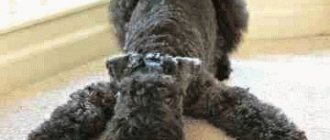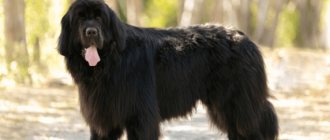Federal Law and other regulations on dog walking.
The development and approval of uniform requirements for keeping pets in Russia took several years. And at the end of 2021, Federal Law No. 498 on the treatment of pets was adopted. It is here that the current norms governing the relationship between people and animals are established. The adopted provisions are aimed at:
- Pet protection;
- Strengthening ethical standards;
- Compliance with the norms of humanity;
- Ensuring the safety of civil rights and interests in the interaction of people with animals;
In addition to the Federal Law, the rules and regulations for keeping pets are stipulated in the following documents:
- General rules for keeping and caring for cats and dogs in populated areas, 1981;
- Veterinary Law No. 4979 – 1 of 1993;
- Federal Law No. 52 of 1999 on sanitation and epidemiology of the country's population;
- Regulatory acts of the constituent entities of the Russian Federation;
Dog walking rules.
The general rules for walking dogs contained in the Federal Law within any subject of the Russian Federation include the following requirements:
1. Walking pets must provide:
- Citizen safety;
- Safety of other animals;
- Integrity of property of individuals and legal entities.
2. Mandatory control of the dog’s movement in the following territories:
- In passenger and freight elevators;
- In the courtyard areas of residential complexes and apartment buildings;
- In the common areas of such objects, namely: stairs, balconies, corridors, staircases, etc.
- On children's playgrounds;
- On sports grounds;
- When crossing highways.
3. Clean up dog feces in public places.
4. Free walking is allowed only in specially designated areas.
5. Dogs of potentially dangerous breeds are allowed to walk without a muzzle or leash only on their own fenced plot of land. A sign about keeping such a dog there should be posted at the entrance.
In turn, regional local governments can supplement the basic requirements with clarifying rules.
As a rule, the following restrictions are introduced in large cities:
- Transporting dogs on public transport only in a special bag or with a leash and muzzle;
- Prohibition of walking dogs taller than forty centimeters at the withers in public areas without a leash and muzzle;
- Restrictions on walking pets where sports or cultural events are held, near kindergartens, schools, as well as on playgrounds and sports grounds.
- Children under 14 years of age should not be allowed to walk large dogs without adult supervision;
- Dog walking is prohibited for persons under the influence of alcohol or drugs;
- It is prohibited for one person to simultaneously walk two or more dogs taller than forty centimeters at the withers;
- It is not allowed to leave dogs unattended in public places, as well as in closed cars for more than 60 minutes at negative street temperatures or above +25 degrees;
- It is prohibited to set dogs on people or other animals;
- Service dogs are allowed in public places.
For example, the listed bans are in effect in Moscow, St. Petersburg and a number of other cities.
Fined for violating the rules of dog walking through Article 19.3 of the Code of Administrative Offenses of the Russian Federation (Disobedience to the law..)
Decision of the Rostov-on-Don City Duma of August 19, 2003 N 232 “On the adoption of the “Rules for keeping dogs and cats in the city of Rostov-on-Don”
In recent years, there has been a tendency in the city to keep pets in violation of sanitary and veterinary standards and generally accepted community rules. The cause of most conflicts is the lack of a regulatory framework regulating the maintenance and use of domestic dogs and cats. The areas for walking and training dogs are not in good condition, there are no measures to take stock of them and open new areas taking into account the real needs and interests of citizens, the municipal shelter for stray animals requires repair. Guided by the Federal Law “On the General Principles of the Organization of Local Self-Government in the Russian Federation”, the Regional Law of the Rostov Region “On Administrative Offenses”, the City Charter, “Sanitary Rules for the Prevention and Control of Contagious Diseases Common to Humans and Animals”, other regulatory legal acts , the City Duma decided: 1. Adopt the “Rules for keeping dogs and cats in the city of Rostov-on-Don” (). 2. City administration: 2.1. Bring your regulatory legal acts into conformity with this decision; 2.2. Develop a system of measures to bring animal walking areas and their inventory into proper condition, as well as measures to design and build new areas taking into account real needs. 3. The Housing and Communal Services Department and the Press Service of the City Administration should develop a system of measures providing for clarification and communication to the population of the “Rules for keeping dogs and cats in the city of Rostov-on-Don.” 4. Recommend that veterinary supervisory authorities, together with other interested services, carry out work among the population to prevent animal diseases and comply with veterinary and sanitary rules. 5. Entrust control over the implementation of this decision to the permanent commission on housing and communal services, road construction, and energy (V.M. Nikolsky).
Mayor of Rostov-on-Don M.A. Chernyshev
Supplement to the City Duma of August 19, 2003 N 232
Rules for keeping dogs and cats in the city of Rostov-on-Don
1. General Provisions
1.1. These “Rules for keeping dogs and cats in the city of Rostov-on-Don” (hereinafter referred to as the “Rules”) define the duties and responsibilities of owners of dogs and cats (hereinafter referred to as “animals”), establish uniform and binding norms and requirements in the field of humane handling of pets; keeping animals in apartments, households, and business entities; organization of walking and transportation of animals. 1.2. The rules were developed on the basis of the current laws of the Russian Federation and the Rostov region, other regulations defining the requirements for keeping pets in the city, the sanitary condition of urban areas, animal protection and apply to all individuals and legal entities (enterprises, institutions and organizations) regardless from their departmental subordination. 1.3. General property rules apply to animals. An animal may be seized from the owner by court decision or in another manner provided for by current legislation. 1.4. The owner of a pet is considered to be an individual or legal entity caring for an animal (dog, cat), including persons who have adopted ownerless animals. An animal permanently residing on the territory owned by an individual is considered an animal of that individual. An animal living on the territory of an enterprise (institution, organization) and intended to perform security or other functions is considered to belong to this legal entity.
2. Responsibilities of animal owners
Animal owners are obliged to:
2.1. Strictly comply with legislation in the field of ensuring the sanitary and epidemiological well-being of the population, expressed in compliance with current sanitary rules and hygienic standards, implementation of anti-epidemic and sanitary and hygienic measures. In case of failure to comply with these requirements, animal owners are brought to administrative responsibility in accordance with the requirements of Article 6.3 of the Code of Administrative Offenses of the Russian Federation. 2.2. Comply with veterinary and public safety requirements, ensure the behavior of the animal in such a way that it does not pose a danger to surrounding people and other animals; 2.3. Provide your animals with the necessary amount of food and water, walk them in accordance with the needs of the species and breed, and observe zoohygienic rules of keeping; 2.4. Immediately deliver an animal that has bitten a person or another animal to a government agency for examination and, if necessary, quarantine for a period of at least 10 days; 2.5. If an animal becomes ill with an infectious disease or is suspected of having an infectious disease, the owner of the animal must immediately contact a veterinarian; 2.6. Immediately report cases of sudden death of animals, their unusual behavior, sudden aggression or cases of animals being bitten by wild predators to veterinary institutions; 2.7. Do not allow the throwing away of animal carcasses and unauthorized burials of dead animals. Such animals must be handed over to specialized housing and communal services; 2.8. If it is impossible to keep the animal in the future, the owner is obliged to transfer it to other citizens or organizations. Abandonment of an animal does not entail the termination of the rights and obligations of the owner in relation to the animal until it is acquired by another person. 2.9. Housing and communal services authorities, administrations of markets, shops, canteens, restaurants, dormitory commandants should not allow the accumulation of stray dogs and cats at their facilities, take measures to exclude the possibility of their entry into basements, attics and other premises.
3. Requirements for keeping animals
3.1. General requirements for keeping animals: regular provision of animals for examination, preventive vaccinations, diagnostic studies; maintaining the sanitary condition of the house and surrounding area. Excrement left by animals in the entrance, elevator, common areas, playgrounds, sidewalks, etc. must be removed by the owner; ensuring peace and quiet in residential premises, as well as in the yard and on the street when walking dogs from 11 pm to 7 am; exclusion of stray animals (stray animals are dogs and cats that are in public places without an accompanying person, except for those left by their owners for a short time on a leash);
3.2. It is prohibited: to keep animals in cages, booths and enclosures that do not correspond to the size of the animal; set dogs on people or animals; keep animals in staircases, common balconies, kitchens, corridors, attics, basements of houses; release animals for independent walking; breed, keep and catch dogs and cats for the purpose of using skins, meat, and other raw materials of animal origin; persons under 14 years of age should independently walk guard, fighting, large and vicious dogs (a vicious dog is an animal that shows obvious signs of aggression towards strangers, other animals, not related to the protection of the owner, territory, offspring).
3.3. The procedure for keeping animals in apartments and households: it is allowed to keep animals both in apartments occupied by one family and in rooms in communal apartments. Keeping animals in the rooms of communal apartments is allowed if the neighbors do not have medical contraindications (allergies); in fenced public yards, it is allowed to keep a dog freely, or to let it out into the yard at night to perform security duty only with the consent of the residents; the number of animals kept in residential premises is limited by the possibility of providing them with living conditions in accordance with zoohygienic requirements. It is prohibited to organize shelters and nurseries in apartments; Dog owners who own or use a plot of land are advised to make a warning sign at the entrance to the plot about the presence of a dog in the yard.
3.4. Keeping animals by business entities: keeping animals is permitted if they provide constant care for the animals; It is prohibited to keep animals in organizations, institutions, and enterprises in the absence of specially equipped premises (places) for this purpose; in order to suppress the uncontrolled reproduction of animals, an economic entity is recommended to sterilize animals; the keeping of animals by the enterprise must comply with the safety standards of people located in the given and adjacent territory; to protect the territory of the enterprise, it is necessary to release guard dogs kept in enclosures or on a leash, after first making sure that there are no visitors in the area; at the entrance to the territory of the enterprise, there should be a warning sign about the protection of the territory by dogs; keeping dogs on the territory of horticultural, gardening, dacha cooperatives, holiday homes, sanatoriums, tourist centers, sports, labor and recreation camps is allowed in compliance with the requirements of these. At the end of the summer season, it is prohibited to leave animals without proper supervision and care.
3.5. The procedure for walking animals: taking animals out of residential premises, entrances of multi-storey residential buildings, and other isolated areas into common courtyards and onto the street is allowed on a short leash. The exception is animals under 3 months of age. In crowded places, dogs accompanied by their owner must be on a leash and/or muzzle. You can let your dog off the leash in places that are allowed for free walking. In the absence of walking areas, walking dogs is allowed in vacant lots, in sparsely populated places, subject to the rules. For guard, fighting and vicious dogs, a muzzle is required even when walking freely; when crossing the street and near highways, the owner of the dog is obliged to take it on a short leash in order to avoid road accidents; Free walking of dogs is prohibited in playgrounds, stadiums, and in the territories of preschools, schools and medical institutions. Other organizations are required to place signs prohibiting entry into their territory with pets; to avoid accidental loss of an out-of-control animal, animal owners are advised to take measures to identify it; stray animals are subject to capture and transfer to a municipal holding point (a specially adapted room for the placement and maintenance of captured stray animals at municipal organizations); captured animals that have identifying marks of belonging to the owner are kept in a holding point from 3 days to 6 months. Information about captured animals is publicly available.
3.6. Procedure for transporting animals: transportation of animals in public transport is carried out in compliance with the established rules for the use of appropriate vehicles, while observing measures to ensure safety and eliminate disturbance to passengers; It is recommended to transport cats and small dogs in special containers (baskets). 3.7. Trade in animals is permitted in places specially equipped for these purposes.
4. Liability for violation of these Rules
Citizens and officials guilty of violating these provisions are liable in accordance with current legislation. Harm caused to the health of citizens or damage to property caused by dogs and cats is compensated in accordance with the procedure established by law.
5. Final provisions
5.1. Other requirements for keeping dogs and cats not provided for herein are regulated by federal and regional legislation.
Responsibility for non-compliance with legislation.
In accordance with Article 21, Article 498 of the Federal Law, dog owners may incur administrative, criminal, and other liability established by law for violations committed.
The type of liability depends on the severity of the offense committed. As a rule, distinctions are made according to the following criteria:
- Administrative liability occurs for violations of established standards without consequences for others. At the same time, a citizen may receive a warning or a fine for walking dogs in the wrong place, as well as without a leash and muzzle;
- Criminal liability arises if the violation entails harm to the life and health of others;
- Other liability occurs in special cases provided for in individual paragraphs and can be expressed in the confiscation of the dog.
Let's look at possible penalties for various violations.
Violation of dog walking Coap of the Russian Federation
3.4. Hello Krion st. 7.21 Violation of other norms and rules in the field of improvement established by regulatory legal acts of the Primorsky Territory, municipal regulatory legal acts - entails the imposition of an administrative fine on citizens in the amount of one thousand to three thousand rubles. For the district police officer, a video recording from a surveillance camera will be sufficient evidence to apply a fine to the dog owner for violating the keeping of pets in the Primorsky Territory as a result of walking the animal in the wrong place and without a leash and muzzle in accordance with clause 8 of the Law of the Primorsky Territory of February 2, 2016 No. 760-KZ
Administrative fine for walking dogs.
Federal legislation does not establish a unified set of penalties for violating the rules for handling pets for the entire country. These values are not established in the Code of Administrative Offenses of Russia. As a result, the fine for dog walking in each region of the Russian Federation is determined by local authorities.
In most regions of the country the following indicators are active:
- The fine for walking dogs without a leash in a park, forest area, playgrounds and other public places is punishable by a fine of 1,000 to 2,000 rubles.
- If an animal is transported by public means of transportation without a muzzle and a leash, the owner will be fined 500 or 1,000 rubles;
- Setting a dog against an animal can result in a fine of up to 2,500 rubles;
- For the same actions directed at a person, the punishment will be twice as severe (5,000 rubles);
- For polluting public places with feces, the owner will be punished in the amount of 1,000 to 2,000 rubles;
- Drunk people walking with a dog will add 5,000 rubles to the state budget;
- For a complaint from neighbors in a communal apartment about the presence and behavior of an animal, the owner can be punished by 2,000 rubles.
It is worth noting that these figures are relevant for individual owners. But officials and legal entities can be punished with fines several times larger. Moreover, increased fines can also be applied to persons who repeatedly commit the same type of offense.
However, some regions set their own indicators and may exceed the average by 1.5 - 2 times. For example, in St. Petersburg and the Leningrad region, for violating the rules of walking a citizen with a dog will be punished in the amount of 2,000 to 4,000 rubles. But for not cleaning up your pet’s feces, the fine will be 500 – 3,000 rubles.
Where to complain about walking a dog without a leash and muzzle
Text: Yulia Makeeva For example, in the Amur region, such requests are accepted at the Veterinary Administration of the Amur Region. Since the beginning of 2021, about 500 complaints have been received from residents of the region about owners walking dogs without leashes and muzzles, Sergei Samokhvalov, head of the Veterinary Department of the Amur Region, told Vizh.
There are reports of domestic dogs walking without their owners at all, the veterinary department noted. For example, on September 24, an appeal was received from residents of Blagoveshchensk. “Residents of an apartment building complained about a neighbor living on the first floor who constantly lets her dog out for a walk on her own. The animal (by the way, not small at all) runs freely around the entrance and yard, scares children and jumps on adults,” the veterinary department said.
According to Sergei Samokhvalov, veterinary department specialists carry out an investigation into each such complaint. “If the facts are confirmed, they issue the animal owners an order to eliminate the violations,” the head of the Amur region veterinary department told Vizh. There are no sanctions for such violations yet in either regional or federal legislation, noted Sergei Samokhvalov.
A more progressive Moscow Code of Administrative Offenses (Moscow Code of Administrative Offences). Article 5.1 provides for a fine of up to two thousand rubles for appearing with a dog without a leash and muzzle in shops and institutions, playgrounds, markets, beaches and in transport. It is also prohibited to walk dogs without a leash in parks, nature reserves and nature reserves of the capital.
Officials of the capital's Veterinary Committee are authorized to draw up protocols for violations under this article. “When the committee receives requests from citizens with information about violations of requirements in the field of treatment of animals, on-site inspections and raids are organized, including with the involvement of police officers, district governments and settlement administrations,” Nadezhda Brodskaya, deputy chairman of the Veterinary Committee, told Vizh. of the city of Moscow - head of the state inspection for supervision in the field of treatment of animals. The protocols are sent to the administrative commissions of prefectures and district governments of the city of Moscow to bring violators to administrative responsibility, Nadezhda Brodskaya clarified.
It is worth noting that the new version of the draft Code of Administrative Offenses of Russia, presented for public discussion on the portal regulation.gov.ru, includes an article for violating requirements in the field of treatment of animals. It is proposed to punish non-compliance with the rules for keeping and using animals with significant fines: for citizens - up to five thousand rubles, for legal entities - up to 100 thousand rubles.
Criminal liability.
If, while walking an animal, the owner violated the rules for handling it, and these actions led to serious harm to a person or group of people, then this will result in criminal liability. In turn, this offense is categorized as causing harm through negligence. As a result, based on Article 118 of the Criminal Code, the owner of the dog can be punished:
- A fine of 80 thousand rubles or the amount of the offender’s salary for six months;
- Restriction of freedom for up to three years;
- Arrest for up to six months;
- Compulsory work lasting up to 480 hours;
- Correctional labor for two years.
If the violator was in the performance of his work duties, then increased penalties will be applied to him.
Fine for walking in the wrong places
The owner should remember that violation of the legally prescribed norms for walking and transporting dogs is punishable.
For walking in the wrong place you are entitled to:
- up to 2 tr. for walking an animal in a green zone (park, square, green area);
- from 1 to 2 tr. Reliable for walking on the playground;
- from 500 rub. up to 1 t.r. for transporting a dog on public transport without a muzzle;
- from 1 to 2 tr. for visiting a store with a pet not muzzled or on a leash;
- up to 2 tr. for keeping an animal in a hostel or communal apartment without the official consent of the neighbors;
- 2.5 t.r. for holding dog fights;
- up to 5 tr. for baiting a person with a dog;
- from 1 to 2 tr. for satisfying natural needs in the wrong place;
- 5 t.r. for walking an animal if the owner is drunk.
Officials will be required to pay amounts twice as large. In case of repeated violations, the amount of penalties increases several times.
Important!
Large breed dogs are considered potentially dangerous.
For attacking a person, the owner of the animal will be prosecuted
!










